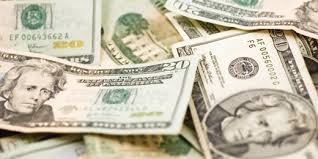With the Fed’s bailout, are dollar bonds still investable? (1)

With the global spread of the new crown epidemic, the United States has become the world's largest number of people diagnosed with the country, in taking "home order" and other measures, its economic situation has taken a sharp turn for the worse, just six months time, the United States from "record low unemployment rate" to "non-farm employment to reduce the number of people close to a new high".
The crisis brought about by the new crown epidemic, forcing the U.S. government had to start "scattering action": monetary policy, the Federal Reserve within two weeks quickly cut interest rates to zero, and opened an unlimited amount of QE, bottoming out the U.S. overnight peer lending, municipal bonds, corporate bonds and real estate mortgage bonds (MBS) and other U.S. debt market; fiscal policy, the U.S. Congress approved the equivalent of 10% of the U.S. GDP size of the $2 trillion fiscal stimulus package.
The problem now is that, with the U.S. economy functioning normally, the U.S. government's debt has reached nearly $24 trillion (as of April 8 Day), at normal economic trends, the total U.S. federal debt could be as high as $48 trillion by 2028, more than the 250% of US GDP. With the epidemic, this debt will rise even faster and more countries will be swept up in it.
This raises a widely asked question: can the U.S. national debt still be invested?
We are bullish on U.S. Treasuries for two reasons.
1. U.S. Treasuries have no rivals and remain a safe haven for global financial assets.
U.S. short-term Treasuries are recognized in international financial markets as risk-free assets and their interest rates are recognized as risk-free rates. Although U.S. Treasuries have been expanding in size, the demand for U.S. Treasuries from global investors, in the midst of global market storms, is Very huge. U.S. Treasury data show that foreign holders have all increased their holdings of U.S. Treasuries significantly this year, with Japan significantly increasing its holdings of U.S. Treasuries of $56.6 billion, the UK also increased its holdings of $30.5 billion over the same period, with both countries holding record levels of US debt, and China also U.S. Treasury holdings increased for the second consecutive month to $1.092 trillion, a new high in the last four months.
"Flight to quality" is the term used to describe the transfer of safe assets in the event of economic turmoil, when investors The act of retreating one's assets from higher cyclical risk assets to lower risk assets that can counteract recessionary cycles. We've actually seen this this year. Global money flowed into U.S. debt amid the biggest crash in U.S. stocks since 2008, with 10-year U.S. Treasuries surging this March At 2.99%, there is still a huge influx of safe-haven money even as interest rates fall below 1%.
The first thing investors thought of before and after the crisis was to invest in U.S. Treasury bonds, just like working people who came home after being beaten up by society, but still thought their mother's cooking smelled best.
2. The United States has never defaulted on its sovereign debt.
In general, government bonds are guaranteed by the creditworthiness of the country, also known as sovereign bonds, and the probability of default is very low; if the sovereign defaults on its bonds, this is called "sovereign default".
If a sovereign bond defaults, this is called "sovereign default". U.S. Treasury bonds have never been in default in history. As of April 11, the scale of U.S. Treasury bonds held by foreign investors is 6.9 trillion U.S. dollars, of which China holds 1.1 trillion U.S. dollars. In the event of a sovereign default on U.S. Treasuries, as governments, corporations, pension and insurance funds, individual investors, and investors with global ownership of All of the mutual fund's investors in Treasuries essentially hold U.S. Treasuries, so they all get hurt.



